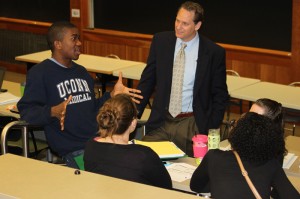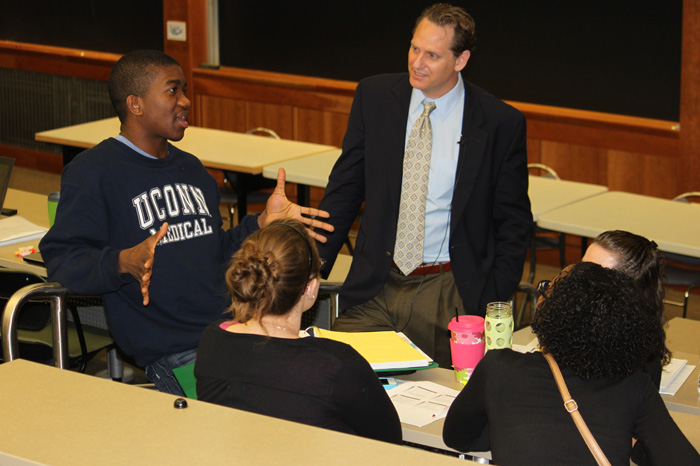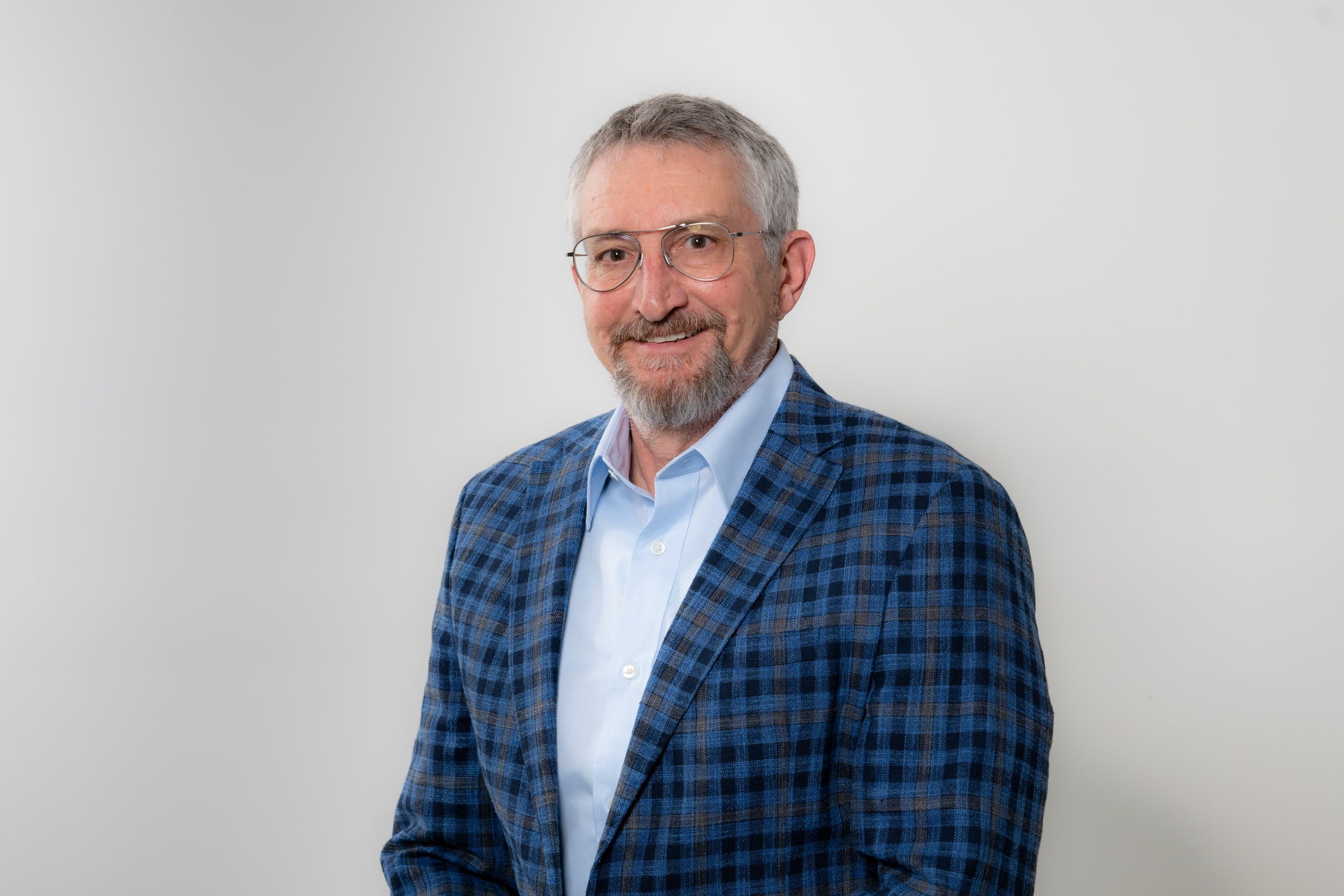
UConn School of Medicine is bolstering its patient safety curriculum with a series of lectures focusing on medical errors.
Dr. Scott Ellner, assistant professor of surgery, gave the first lecture July 6. His audience was third-year medical students.
“We’re trying to change the culture where our medical students are going to go out there and be the ones who are going to effect culture change,” Ellner says. “Very few medical schools have implemented a curriculum like this. We’re one of the first that I know of in the region.”
The curriculum is structured for all levels of medical school, as well as nursing, pharmacy and dental students. It centers on the principles of patient safety, including errors and adverse events and how to handle them, as well as accountability.
“If you teach medical students early on, before they go out into their training and actually start seeing patients, you are going to instill in them the values of how to deal with medical errors, how to react appropriately, how to be transparent, and how to provide better quality care,” says Ellner, who plans to bring in patients who’ve been harmed by medical mistakes as guest speakers.
“I learned a lot about new approaches to mistakes in health care and innovative ways of approaching them to ensure that they don’t persist,” says student Matthew Anderson, whose class heard Ellner’s lecture two second-year students August 30. “Previously I thought that all of the blame was put on the doctor, which worried me. Today’s lecture not only expanded my view of why putting the blame all on one person isn’t necessarily effective in preventing future mistakes, but it also provided me with valuable information on the new procedures and programs that are being put into place to ensure that these practices are reported and dealt with to safeguard against such problems in the future.”
Ellner based the patient safety curriculum on findings and recommendations from the 2010 white paper “Unmet Needs: Teaching Phyisicans to Provide Safe Patient Care,” a report by the National Patient Safety Foundation’s Lucian Leape Institute.
“When they went back and did an analysis of all the errors that occurred in health care, it really came down to communication,” Ellner says. “They felt where we are falling short was when we teach the younger providers how to behave in a health care setting, and gave examples of disruptive behavior and how that can impact patient outcomes and can lead to dangerous errors.”
Recommendations—in the operating room, for instance—include using a checklist, making sure everyone in the room understands the plan of care, understanding the equipment, and taking simple steps to ensure the procedure will be performed in the correct location on the correct patient.
Although Ellner, a surgeon at Saint Francis Hospital and Medical Center who also serves as its director of surgical quality, pushed the concept at the faculty level, the idea wasn’t entirely his.
“This really was driven by the students,” Ellner says. “Many have taken notice of my passion for patient safety, and one of them, Steve Nelson, a fourth-year, after spending a month on a general surgery rotation with me, went back to his classmates and surveyed the students on their insight on patient safety, and whether they’d be interested in the curriculum.”
“It was the first time I had been exposed to patient safety and the culture of safety, and he explained several complications going on in the surgical field,” Nelson says. “It was fantastic to learn how you can avoid those, how you can pre-empt them, and how you can stop them.”
More than 100 students, representing all four classes, responded. Nelson says 80 percent agreed or strongly agreed that patient safety should be its own curriculum.
“It is important,” Nelson says. “Many students already are overwhelmed with a vast, in-depth and complicated curriculum, but they see the importance of patient safety and the importance of avoiding errors in their own practices.”
“The results were very compelling,” Ellner says. “Overwhelmingly, they strongly agreed it should be part of their learning experience at their medical school.”
Ellner brought the idea to Dr. Suzanne Rose, senior associate dean for education, and other medical school leaders and stakeholders, including Drs. Scott Allen, Bruce Gould and Dan Henry. They were able to get the curriculum committee’s blessing.
“Unfortunately data show that medical errors represent a major cause of morbidity and mortality in the United States,” Rose says. “Many of these errors are preventable through educational initiatives in patient safety. It is important for these curricular topics to be integrated across the education continuum through residency training and continuing medical education for practicing physicians, which we are also doing here at UConn. Our ultimate goal is to make a positive impact on our health care system and to improve the lives of our patients.”
Follow the UConn Health Center on Facebook, Twitter and YouTube.



